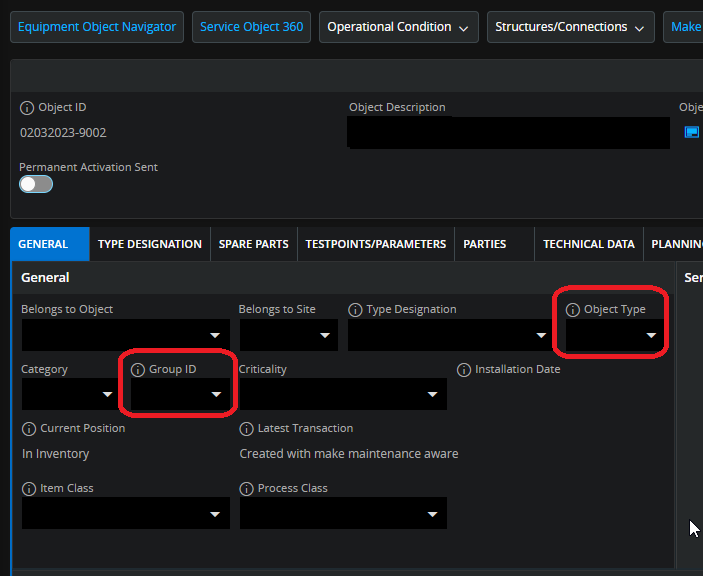@Timmermans Roel ,
As you already mentioned, group ID is used to group the equipment’s, the grouping can be based on the functions, locations, operations, connection, process etc. Also, you can specify some of the basic information which are required for monitoring equipment performance.
When it comes to object type, it has more functionality associated with it other than grouping the equipment’s with similar characteristics.
- Technical characteristics will be inherited from object type to serial object which helps you to maintain the standard parameters or operating conditions of the similar equipment at one place.
- You can have an object type structure by connecting the parent object type to the object type and this will help to structurally organize your equipment’s.
- Position type can be connected to object type which encloses the different of positions (On, Off, running will less rpm etc.) in which equipment should be during execution of isolation order
- Item class can be connected against the object type which will be used in PM program as well in structural failure mode & effect analysis as item class hold the information such as
failing components, causes, symptoms, corrective actions, functions, and fault types. Note: this can be added manually to the equipment.
By using copy serial object you can copy this information automatically , but I don’t think we can fill this information by default or through some parameters while creating the serial object.
Hope this clarification helps!
Regards,
Mithun K V
Hi @EqeMithuV ,
Thanks for your reply. The difference between group ID and Object type is now clear.
Although i am still struggling to understand why we have to set these manually for each Serial Object. When we sell a Part Serial through CO, we can use the option ‘Create SM Object’ and when the part is delivered, the Serial Object gets created.
it would seem logically that based on the Part Number, we could also automatically have the Object Type and/or Object Group ID be auto-completed (Part number is known, so inventory part specifications like ‘product Family’ would seem usefull for making a distinction on what object type/group ID would be defaulted at creation).
How do you look at this?
best Regards
Roel
Hi @Timmermans Roel ,
Yes, agree with you but currently we can only have the option to mention the superior object & superior object site when we create the object through customer order option ‘Create SM Object’. But you can achieve this by a simple custom event to update the object type & group id of the object based on the product family, commodity , product code etc. of inventory part when it is created from customer order.
Regards,
Mithun K V



